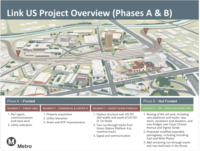Airports across America with major capital programs underway are trying to push alternative project delivery methods to new levels, although design-bid-build is still used for a majority of horizontal work.
“Are we ready to spend more time on integrated project delivery?” asked Mike Kenig, vice chairman of Holder Construction Co., speaking to attendees of the Airport Construction Strategy Summit, held last month in Kansas City, Mo. The summit was sponsored by Airports Council International-North America, Airport Consultants Council and the Associated General Contractors of America. Kenig noted that the concept of “target value,” as opposed to a guaranteed maximum price, is still rare in airport contracts. He added, “We have no consensus on what the design-build choices are,” e.g., low-bid or qualifications-based.
Geoff Neumayr, chief development officer with San Francisco International Airport, emphasized the idea of progressive design-build as a qualifications-based and best-value contract where “the owner progresses to a price” with the team. He said that fixed-fee design-build contracts were posing a serious issue: “Builders sue designers when you push for fixed fees.”
Robert Alfert, partner with the law firm Nelson Mullins, noted that Orlando International Airport, in the midst of a $4.2-billion capital program, is utilizing construction manager-at-risk with GMPs for various components.
Dwight Pullen, director of the Aviation Center for Excellence with Skanska USA, said that before submitting to requests for qualifications, “we examine if we have the right players and skills. Can we get insurance for some consequential damages? How do the terms impact cash flow?” The contractor also looks at the owner’s experience with design-build, the availability of qualified subs and the political landscape, he said.
Collaboration early on is key. “I’ve seen progressive design-build where [stakeholders] weren’t involved until the 30% stage,” said Pullen. “That’s not very progressive.”





Post a comment to this article
Report Abusive Comment